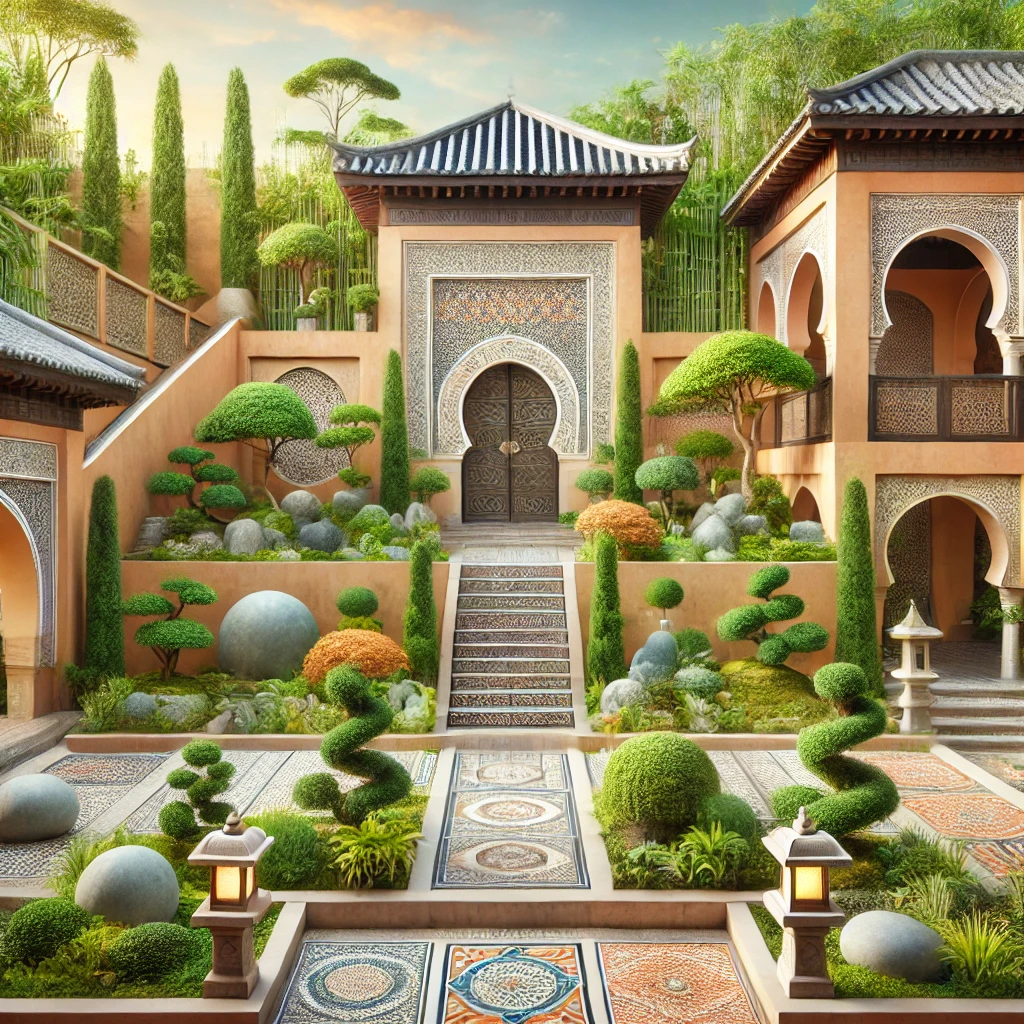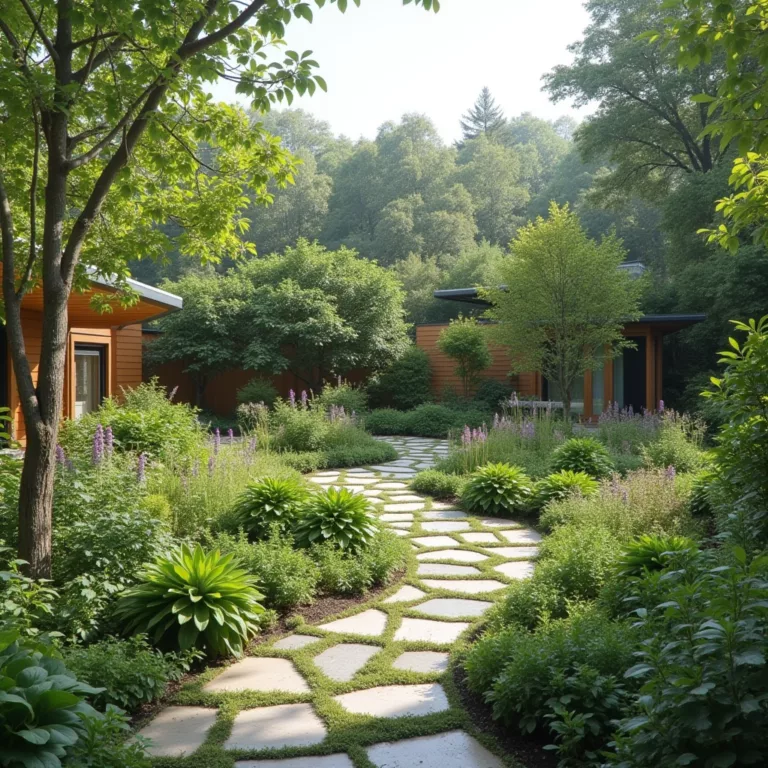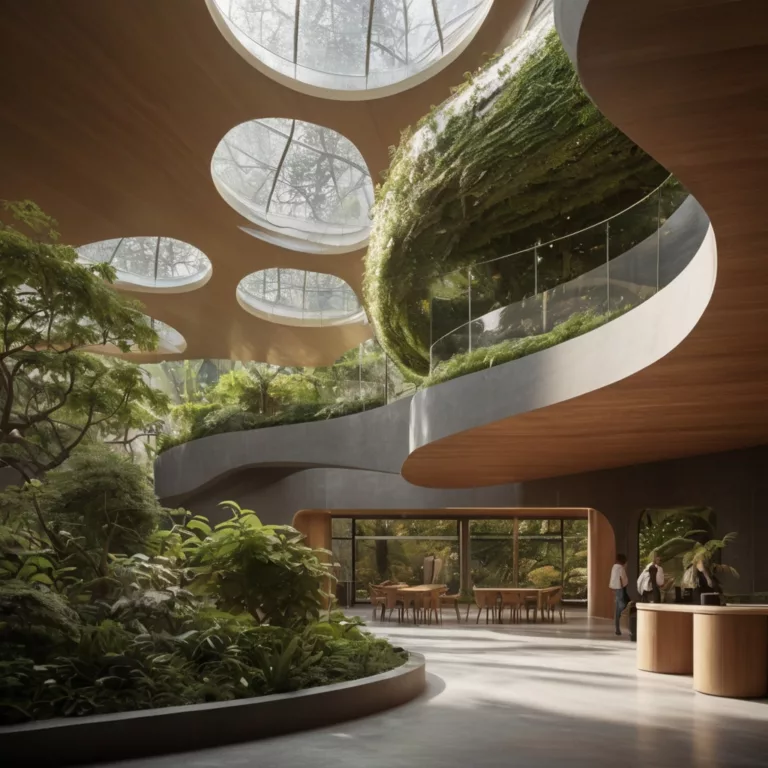Cultural Fusion in Garden Design: Weaving the World’s Wisdom into Landscapes of Belonging
Introduction: Gardens as Living Tapestries of Humanity
Gardens have always been mirrors of culture
spaces where beliefs, histories, and relation ships with nature crystallize into form. Today, as borders blur and narratives intertwine, a new design ethos emerges: cultural fusion. This philosophy transcends imitation, weaving global traditions into landscapes that honor heritage while innovating for contemporary needs. From the fractal patterns of Islamic gardens meeting Scandinavian minimalism to Amazonian agroforestry principles revitalizing urban farms, this exploration reveals how gardens can become bridges between worlds. For Art11deco’s global audience, we embark on a journey through time and terrain, uncovering how cultural fusion is redefining beauty, sustainability, and belonging.
Part 1: The Roots of Cultural Fusion – A Historical Perspective
1.1 Ancient Cross-Pollinations
- The Silk Road Gardens: Persian pairidaeza (paradise gardens) influenced Chinese imperial landscapes, blending water channels with mountain symbolism.
- Moorish Spain: Alhambra’s courtyards fused Islamic geometry, Roman hydraulics, and Andalusian citrus groves.
- Colonial Botany: The 18th-century exchange of plants (e.g., tulips from Turkey to Holland, potatoes from Peru to Europe) reshaped national identities.
1.2 Cultural Appropriation vs. Appreciation
- Respectful Adaptation: Japan’s adoption of Chinese feng shui evolved into distinct niwaki pruning traditions.
- Colonial Shadows: Addressing problematic histories (e.g., British theft of tea plants from China) to foster equitable cultural dialogue.
Part 2: Global Garden Traditions – A Continent-by-Continent Odyssey
2.1 Asia: Harmony and Symbolism
- Japanese Zen Gardens: Raked gravel as water, pruned pines as mountains minimalism as meditation.
- Indian Mughal Gardens: Charbagh quadripartite layouts symbolizing Islamic cosmology and Hindu mandalas.
- Balinese Subak: Terraced rice paddies as sacred collaborations between farmers, priests, and nature.
2.2 Africa: Resilience and Community
- Egyptian Pharaonic Gardens: Date palms, lotus pools, and sycamore alleys as symbols of eternal life.
- Moroccan Riad Gardens: Central courtyards with zellige mosaics and drought-tolerant jasmine.
- Ethiopian Church Forests: Sacred groves preserving biodiversity amid agricultural sprawl.
2.3 Europe: Order and Romance
- Italian Renaissance Gardens: Axial symmetry, mythological statuary, and citrus limonaie.
- English Cottage Gardens: Chaotic charm blending medicinal herbs, roses, and vegetables.
- Nordic Allotments: Communal plots fostering seasonal resilience and social equity.
2.4 The Americas: Syncretism and Abundance
- Aztec Chinampas: Floating gardens cultivating maize and flowers on Tenochtitlan’s lakes.
- Colonial Mission Gardens: Spanish-Moorish courtyards fused with Native American medicinal plants.
- Brazilian Quilombo Gardens: Afro-Indigenous agroforestry systems resisting ecological and cultural erasure.
2.5 Oceania: Kinship with Land
- Māori Māra Kai: Food forests honoring whakapapa (genealogical ties to nature).
- Aboriginal Firestick Farming: Controlled burns to regenerate bush food ecosystems.
- Polynesian Taro Terraces: Hydraulic engineering sustaining staple crops on volcanic slopes.
Part 3: Principles of Culturally Fused Design
3.1 Symbolic Synthesis
- Material Dialogues: Combining Japanese shou sugi ban (charred wood) with West African indigo-dyed textiles.
- Pattern Fusion: Merging Celtic knots with Maori kowhaiwhai motifs in paving designs.
3.2 Ecological Hybridity
- Plant Migration: Growing Mexican agaves in Mediterranean climates, paired with native drought-tolerant herbs.
- Microclimate Mimicry: Recreating Andean terrace humidity in urban vertical farms.
3.3 Ritual Spaces
- Altars of Unity: A Balinese penjor (bamboo pole offering) beside a Nordic midsommarstång (maypole).
- Water as Connector: Moroccan sahn fountains reflecting Australian Aboriginal rainmaking songs.
Part 4: Case Studies – Fusion in Action
4.1 The Aga Khan Garden (Edmonton, Canada)
- Design: A blend of Islamic chahar bagh geometry, Canadian prairie grasses, and Alhambra-inspired mosaics.
- Impact: Hosts interfaith dialogues and Indigenous storytelling circles, bridging Muslim and First Nations heritage.
4.2 Singapore’s Gardens by the Bay
- Fusion Elements: Supertrees inspired by Bornean rainforest giants, Chinese scholar rocks, and British Victorian glasshouse tech.
- Impact: A symbol of Singapore’s multicultural identity, attracting 50 million visitors since 2012.
4.3 Babylonstoren (South Africa)
- Design: A Cape Dutch farmstead reimagined with Malay slave garden crops, Japanese tea pavilions, and Khoisan medicinal herbs.
- Impact: Celebrates South Africa’s “Rainbow Nation” ethos through edible biodiversity.
4.4 The Eden Project (UK)
- Biomes: Replicas of Mediterranean, Amazonian, and Southeast Asian ecosystems, built on a reclaimed clay pit.
- Impact: Educates 1 million+ annual visitors on global plant-human interdependency.
Part 5: Challenges and Ethical Considerations
5.1 Avoiding Cultural Theft
- Co-Creation Models: Partnering with local elders and artisans (e.g., Māori carvers in New Zealand civic gardens).
- Profit Sharing: Ensuring Indigenous communities benefit from commercialized designs (e.g., Aboriginal dot paintings in landscaping).
5.2 Ecological Responsibility
- Invasive Species: Replacing romantic-but-destructive plants (e.g., English ivy in North America) with culturally symbolic natives.
- Climate Justice: Prioritizing drought-tolerant species from regions facing similar aridification.
5.3 Balancing Authenticity and Innovation
- Contextual Sensitivity: A Mexican milpa (corn-bean-squash polyculture) adapted to urban rooftops without losing ancestral essence.
- Modern Materials: Using 3D-printed ceramics to replicate traditional terracotta ollas for irrigation.
Part 6: The Future of Cultural Fusion – Trends and Visions
6.1 Digital Diasporas
- Virtual Heritage Gardens: VR recreations of lost landscapes (e.g., Syrian oasis cities) for refugees to reconnect with roots.
- AI-Driven Design: Algorithms cross-referencing global garden styles to generate fusion concepts (e.g., AI blending Inca terraces with Dutch tulip fields).
6.2 Climate-Resilient Hybrids
- Mesoamerican + Nordic Fusion: Aztec chinampas redesigned with Viking turf roofs for flood and insulation control.
- Saharan + Scandinavian Xeriscapes: Combining Bedouin water-harvesting techniques with hygge-inspired social spaces.
6.3 Urban Fusion Laboratories
- Melbourne’s Immigration Museum Garden: A living archive where migrants plant species from their homelands, creating a “botanical United Nations.”
- Dubai’s Global Souk Garden: A marketplace of ideas with Persian rugs as planters, Thai spirit houses, and Brazilian cobogó screens.
Part 7: DIY Cultural Fusion – Guidelines for Home Gardeners
7.1 Research and Respect
- Learn the Story: Understand the cultural significance of elements before adopting them (e.g., Hindu kolam patterns vs. mere decoration).
- Source Ethically: Purchase plants and materials from culturally owned businesses.
7.2 Start Small, Think Symbolic
- Tea Corner Hybrid: A Japanese tsukubai (stone basin) beside a Moroccan mint tea garden.
- Fusion Planters: Korean onggi pots planted with Native American “Three Sisters” crops.
7.3 Community Collaboration
- Cultural Garden Swaps: Exchange seeds and stories with neighbors from diverse backgrounds.
- Festival Gardens: Create temporary installations for Diwali, Juneteenth, or Mid-Autumn Festival, blending motifs.
Conclusion: Gardens as Embassies of Unity
Cultural fusion in garden design is not about erasing differences but celebrating them a reminder that diversity, like biodiversity, is the bedrock of resilience. These spaces challenge xenophobia and climate collapse alike, proving that roots can intertwine without tangling, and traditions can evolve without erasure. As we till the soil of shared humanity, we cultivate a future where every garden is a testament to the beauty of belonging.
Call to Action:
- Gardeners: Plant a “fusion bed” with species from two different cultures.
- Designers: Partner with cultural ambassadors for your next project.
- Communities: Transform divisive spaces (e.g., borderlands, disputed territories) into collaborative gardens.
Art11deco







